
I love the Yorkshire Dales and the people that live there. I admire them for their bluntness. If you want to know your shortcomings, you won’t find more helpful people anywhere. I lived for eight years in Malhamdale, and hardly a day passed when some crusty Dalesman didn’t take time to help me identify one or more of my deficiencies.
I love and miss Malhamdale, but decided now, for the sake of novelty, to visit some parts of the Dales I was less familiar with and so headed to Dentdale. Insofar as Dentdale is known at all, it is as one of the principal locations of the celebrated Settle-to-Carlisle railway line, which may be both the most aesthetic and the most wonderfully redundant railway line ever built in England. It was conceived sometime in the 1860s by James Allport, general manager of the Midland Railway, who wanted a route to Scotland. The only possible way was through the Pennine Hills, through seventy-two miles of landscape so irregular and deeply folded as to be an engineer’s nightmare. The project required fourteen tunnels and twenty-one viaducts, several of the latter quite enormous. Surely none of this could ever be economic. Indeed, when it dawned on Allport and his colleagues what a mad project it was, they applied to Parliament for permission to pull out of the project but Parliament sadistically refused to grant it.
Allport appointed a young engineer named Charles Sharland to get the line built. Sharland slept in a waggon and often worked for hours in drenching rains or driving snow. Even more remarkably, he did all this while suffering acutely from tuberculosis. Inevitably, it caught up with him and, with his work almost finished, he retired to Torquay at the age of just twenty-five. He passed on soon afterwards, never having seen a train run on the line he helped to create.
The line opened in 1876, and from its beginning it was a magnificent folly. For practical reasons it didn’t even go terribly near many of the communities it was built to serve. Kirkby Stephen station is a mile and a half from the village of Kirkby Stephen. Dent station is four miles from, and a steep six hundred feet above, Dent village.
British Rail later spent years trying to close the line, and did succeed in running it down to almost nothing. Dent station was closed for sixteen years and many of the others received only minimal attention. Today, however, the line is a model of what you can do with a little intelligent management and marketing.
Kuva: www.newton-grange.co.uk (27.9.2016)
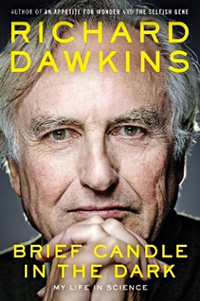
A Fellow of both the Royal Society and the Royal Society of Literature, Richard Dawkins retired from his position as the Charles Simonyi Professor for the Public Understanding of Science at Oxford University in 2008 and remains a Fellow of New College. In 2013, Dawkins was voted the world’s top thinker in Prospect Magazine’s poll of over 10,000 readers from over 100 countries. In Brief Candle in the Dark he continues his autobiography.
One of my most grievous responsibilities was to admit young biologists to New College in the first place. What was hard was the obligation to turn down so many good and keen candidates because the competition was so severe. Every November, from all around Britain and far beyond, crowds of eager young people descend on Oxford for their interviews, many of them noticeably shivering with cold in their thin, unaccustomed suits. The colleges put them up in student rooms, which have been vacated by all the incumbent undergraduates except a few volunteers who stay behind as ‘shepherds’ to look after them, show them around, and try to make sure that cold is all they shiver from.
In addition to interviewing candidates, until it was abolished I also had to read their answers to the Oxford entrance examination, and contribute to setting the questions for that quirkily idiosyncratic paper (‘Why do animals have heads?’ ‘Why has the cow got four legs and the milking stool three?’ Neither of those two questions was mine, by the way.) In both the entrance exam and the interviews, we were not after factual knowledge for its own sake. Exactly what we were testing is harder to define: intelligence, yes, but not just the IQ-type intelligence. I suppose it was something like ‘ability to reason constructively in the particular ways required by the subject’, in my case biology: lateral thinking, biological intuition, maybe ‘teachability’ – even an attempt to assess ‘Would it be a rewarding experience to teach this person? And is this the kind of person who would benefit from an Oxbridge education, especially from our unique tutorial system?’
Here’s a digression whose relevance will become apparent. In 1998, I was invited to present the trophy at the final of University Challenge. This is a general knowledge quiz show on BBC television, in which representatives of universities (the colleges of Oxford and Cambridge are treated as separate entities for this purpose) compete in a complicated form of knockout competition. The standard of general knowledge displayed can be astonishingly high – the popular Who Wants to Be a Millionaire? is very low-grade by comparison, and presumably gains its appeal from the element of gambling for large rewards. In my speech in Manchester, presenting the trophy to the 1998 winners of University Challenge (Magdalen College, Oxford, who defeated Birkbeck, London in the final), I said (according to a quote in Wikipedia, which agrees with my memory):
‘I’m conducting a campaign at Oxford with my colleagues to make them abolish the A-Level [the nationwide school-leaving exam, which tests specialist knowledge] as the criterion for admitting students, and substitute University Challenge. I’m very serious about this; the kind of mind you need to win University Challenge – it’s not the knowledge that matters – but it’s the retentive mind to pick things up wherever you are that you need at university too.’
I told a story of an undergraduate studying history at Oxford, who was unable to find Africa on a map of the world. When I said to a colleague that she should never have been admitted to our (or any) university, he protested that maybe she had missed the relevant geography lesson at school. That is precisely not the point. If you need a geography lesson in order to know where Africa is – if, by age seventeen, you have somehow failed to imbibe such knowledge by osmosis or simple curiosity – you surely don’t have the sort of mind that would benefit from a university education. That is an extreme illustration of why I suggested a University Challenge-style general knowledge test as part of our entrance procedure: not general knowledge for its own sake, but general knowledge as a litmus test for a teachable mind.
My suggestion (tongue somewhat but not wholly in cheek) has yet to be taken seriously. But Oxford did (and still does) make an effort to test more than just factual knowledge narrowly relevant to the proposed subject of study. A typical question that I might ask in an interview (derived from Peter Medawar [Nobel-Prize-winning British scientist]) was: ‘The artist El Greco had a reputation for painting his figures especially long and thin. It’s been suggested that the reason for this is that he had a defect in his vision, which made everything appear stretched in the vertical direction. Do you think that is a plausible theory?’
Some students immediately got it, and I would rate them highly: ‘No, it’s a bad theory because when he looked at his own paintings they would be even more stretched.’ Some didn’t get it at first, but I was able to coax them through a line of reasoning until they did see the point. Some of them were then clearly intrigued, perhaps annoyed with themselves for not seeing the point straight away, and I’d rate them fairly high too, as teachable. Some might put up a fight, and I’d give them credit for that too: ‘Perhaps El Greco’s vision was defective only when he looked at more distant objects like the model, not when he looked at close objects like his canvas.’ Others just didn’t get the point at all, even when I tried to lead them towards it, and I marked them down as less likely to benefit from an Oxford education.
Another favourite question to test their biological intuition began: ‘How many grandparents do you have?’ Four. ‘And how many great-grandparents?’ Sixteen. ‘Right then, how many ancestors do you think you had two thousand years ago, in the time of Christ?’ The brighter ones tumbled to the fact that you can’t go on doubling up infinitely, because the number of ancestors rapidly overtakes the billions of people in the world now, let alone the comparatively small number that were alive in the time of Christ. That proved to be a good line of reasoning to coax them to the conclusion that we all are cousins, with numerous shared ancestors who lived not so long ago.
Kuva: http://bit.ly/2jkVXN5 (27.9.2016)
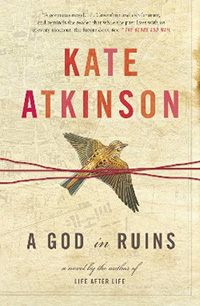
They bombed the target from sixteen thousand feet. The weather had started to close in on the approach. The Alps were no longer beautiful – no longer visible, in fact – and as they turned for home they found themselves confronted by a huge dark tower of cumulus, looming high above them. Inside this monster were the flashes and sparks as if small explosions were going off and at first they thought it must be something to do with the bombing – or even some kind of new weapon that was tried out on them – and it took a few moments before they understood that they were flying into an enormous, sinister thunderhead.
Touched everywhere by fire, bright blue and unearthly – an eerie luminescence that flared along the edges of wings and even whirled round with the propellers, spinning off them and making strange feathery trails in the darkness.
The strange phenomenon made Teddy think of Giselle. He had seen the performance of the ballet when he was at school, a trip to the Royal Opera House organized by the music master. The dancers had been lit by the same rather sinister and otherworldly blue light that was now attracted to the plane he was flying. Looking back, it had been an odd choice for a class of boisterous thirteen-year-old public-school boys. His father, when told, had raised an eyebrow and asked the master’s name and even his mother, with her love of Art, had questioned them being exposed to this rather ‘fey’ choice, as she put it, when usually the only time they left the school grounds was to go to an away rugby match. Afterwards Teddy had nightmares, dreaming that the spectral women had their hands on him and were trying to drag him down into some dark, unknown place.
Kuva: http://bit.ly/2iQaqoa (27.9.2016)

Lord Percy of Newcastle, Britain’s Minister of Education in 1924-29 was no fan of the fad for happy-clappy “progressive” education that spread among the country’s schools on his watch. He declared that it was all nonsense: “a child ought to be brought up to expect unhappiness”. This columnist feels the same suspicion of the fashion for happy-clappy progressive management theory that is rushing through the world’s companies and even some governments.
The leading miscreant is Zappos, an online shoe shop. The firm expects its staff to be in a state of barely controlled delirium when they sell shoes. Pret A Manger, a British food chain, specialises in bubbly good humour as well as sandwiches. Air stewards are trained to sound mellifluous but those at Virgin Atlantic seem on the verge of breaking out into a song-and-dance routine. Google until recently had an in-house “jolly good fellow” to spread mindfulness and empathy.
A weird assortment of gurus and consultancies is pushing the cult of happiness. Shawn Achor, who has taught at Harvard University, now makes a living teaching big companies around the world how to turn contentment into a source of competitive advantage. One of his rules is to create “happiness hygiene”. Just as we brush our teeth every day, goes his theory, we should think positive thoughts and write positive e-mails. Zappos is so happy with its work on joy that it has spun off a consultancy called Delivering Happiness. It has a chief happiness officer (CHO), a global happiness navigator, a happiness hustler, a happiness alchemist and, for philosophically-minded customers, a happiness owl. Plasticity Labs, a technology firm which grew out of an earlier startup called the Smile Epidemic, says it is committed to supporting a billion people on their path to happiness in both their personal and professional lives.
Some firms are trying to create some wellbeing, too, showering their employees with mindfulness courses, yoga lessons and anything else that proves that managers are interested in “the whole person”. 11.4. Management theorists note that a big threat to corporate performance is widespread disengagement among workers. Happy people are more engaged and productive, say psychologists. Gallup claimed in 2013 that the “unhappiness” of employees costs the American economy $500 billion a year in lost productivity.
One problem with tracking happiness is that it is such a vague metric: it is difficult to prove or disprove Gallup’s numbers since it is not entirely clear what is being measured. Companies would be much better off forgetting wishy-washy goals like encouraging contentment. They should concentrate on eliminating 11.6., such as time-wasting meetings and pointless memos. Instead, they are likely to develop ever more sophisticated ways of measuring the emotional state of their employees. Academics are already busy creating smartphone apps that help people keep track of their moods, such as Track Your Happiness and Moodscope. It may not be long before human resource departments start measuring workplace euphoria via apps, cameras and voice recorders.
Be miserable. It’ll make you feel better
The idea of companies employing jolly good fellows and “happiness alchemists” may be cringe-making, but is there anything else really wrong with it? Various academic studies suggest that “emotional labour” can bring significant costs. The more employees are obliged to fix their faces with a rictus smile or express joy at a customer’s choice of shoes, the more likely they are to suffer problems of burnout. And the contradiction between companies demanding more displays of contentment from workers, even as they put them on miserably short-term contracts and turn them into self-employed “partners”, is becoming more stark.
But the biggest problem with the cult of 11.8. is that it is an unacceptable invasion of individual liberty. Many companies are already overstepping the mark. A large American health-care provider, Ochsner Health System, introduced a 11.9. that workers must make eye 11.10. and smile whenever they walk within ten feet of another person in the hospital. Pret A Manger sends in mystery shoppers to visit every outlet regularly to see if they are greeted with the requisite degree of joy. Pass the 11.11. and the entire staff gets a 11.12. – a powerful incentive for workers to turn themselves into happiness police. Companies have a right to ask their employees to be polite when they deal with members of the public. They do not have a right to try to regulate their workers’ psychological states and turn happiness into an instrument of corporate control.
Kuva: http://bit.ly/2jE9mkn (27.9.2016)
Audio for background:
What you hear is an excerpt from the record Years, created by Bartholomäus Traubeck, which features seven recordings from different Austrian trees including oak, maple, walnut, and beech. What you are hearing is an ash tree’s year ring data. Every tree sounds vastly unique due to varying characteristics of the rings, such as strength, thickness and rate of growth.
Keep in mind that the tree rings are being translated into the language of music, rather than sounding musical in and of themselves. Using a record player, a camera and a stepper motor, the tree ring data are first read and then relayed to music production software. Hats off to Traubeck for coming up with the ingenious method to turn a simple slice of wood into a beautiful unique arrangement. It makes you wonder what types of music other parts of nature would play.
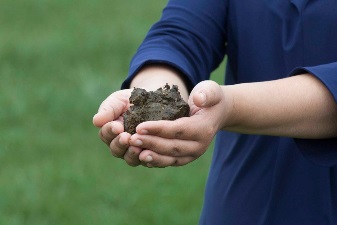
12.2.
Eindhoven designer Jalila Essaïdi has turned manure into haute couture, creating a poo-based fabric that has been used to make clothes. The bio-textile is one of several different materials Essaïdi manufactured from recycled cow dung, including bio-plastics and bio-paper.
The designer pursued the project, titled Mestic, with her BioArtLab as a way of addressing the global manure surplus, which is responsible for excessive amounts of harmful phosphorus and nitrogen in water.
According to Essaïdi the materials are biodegradable and perform in much the same way as plastic derived from fossil fuels. The degradability can also be altered in the lab, creating materials that last for different periods of time depending on their end use.
Kuva: Cleo Goossens, http://bit.ly/2kfObbz (27.9.2016)

12.3.
The City of Vancouver’s plan to use an alternative to salt has not been effective at reducing the ice that still coats most of the municipality’s sidewalks, roads, and driveways. “We passed a city ordinance a few months ago that eliminated the harmful effects of road salt and sand,” explained Mayor Gregor Robertson. “Instead, we have stockpiled mounds of a plant-based alternative that is made from dehydrated dandelions, sea kelp, and wild rice. I have been assured by the producers that the salt-alternative has not been tested on animals.
The product known as Earth Ally Ice Remover, which costs $1 per grain at many naturopathic and alternative drug stores throughout the city, has failed to break up any of the ice. However, Vancouverites are taking it in stride. “Well, I’m at least glad the people who make this stuff are unionized and earning a decent wage,” said pedestrian Sandra Pyeon who then slipped on the ice, injuring her back. “Too bad the new salt consists mostly of water.”
Kuva: www.cbc.ca (3.1.2017)
12.4.
Corn genetically engineered to make ninjalike molecules can launch an attack on invading fungi, stopping the fungus from producing carcinogenic toxins.
With fungal toxins affecting up to 25 percent of crops worldwide, the finding could help boost global food safety, the researchers conclude.
Charles Woloshuk, a plant pathologist at Purdue University in West Lafayette, Indiana, says allowing A. flavus to grow and focusing on preventing it from making the toxin is a good approach. In the past, researchers have unsuccessfully tried to breed fungus-resistant crops to combat aflatoxins.
| accept, adopt, clear, collide, empower, erase, grant, ride, reflect, strike, travel |
Nicaragua native Erick Marenco joined the U.S. Army in 2004, partly to make a big change in his life and partly to pay back his 13.1. country.
During his four-year stint, he 13.2. roads, bridges and pathways of explosive devices in Iraq as a combat engineer specialist. It was a scary job made even more frightening when the vehicle he was 13.3. in his first mission 13.4. an improvised explosive device and blew up under his seat. He would have one more close brush with death, and a good friend of his from Miami would die in combat.
“It made me 13.5. about how short life is,” Marenco said. “I told God: If you can only give me the opportunity to go back to live my civilian life, without any hurt to my mental and physical ability, I won’t disappoint. I will do anything it takes to do my best and 13.6. people to do the best they can.”
Marenco said he left the military with emotional and physical problems, but he took advantage of the G.I. Bill law to get his bachelor’s degree at Florida International University, with a double major in marketing and business administration. After months of not being able to find a job, he returned to the university to get his master’s degree in international business.
Again, he failed to get a job. So he turned his energy and focus to an idea that had been long brewing, the creation of personal development and self-help books. From all of his life experiences, he developed his idea for a life planner that also helps users organize and define their values about the various aspects of their lives, including community and personal relationships, finances and even spirituality. Nowhere else had he seen a planner with this holistic approach.
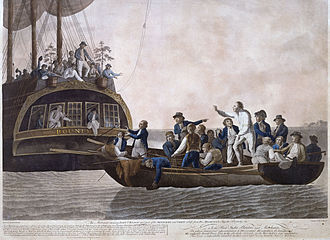
At the beginning of April 1789, HMS Bounty left Tahiti, 15.1. plants to the West Indies. The ship had been in Tahiti since the previous autumn, and the crew had amused 15.2. in the sunshine with the local women. But as they ploughed through 15.3., they chafed at the restoration of discipline under the captain, William Bligh. By the night of 27 April, his old friend Fletcher Christian had decided to act.
In the early hours of the following morning, Christian and 15.4. allies secured the upper deck and armed themselves with muskets. Some time after five o’clock, Christian led them to Bligh’s cabin. 15.5. his own account, the captain “called 15.6. I could in hopes of assistance”, but the mutineers managed to drag him away. 15.7., the Bounty was in chaos. On the quarterdeck, 15.8. mutineers, Bligh shouted for help, 15.9. his shipmates to “knock Christian down”. Amid the general chaos, Christian exhorted the men to back him instead.
15.10. to Christian’s expectation, many of the men were determined to support the captain, not the mutineers, 15.11. suggests Bligh’s reputation for hardness is ill deserved. In all, eighteen men 15.12. in the ship’s launch. The carpenter’s mates wanted to go too, but Christian 15.13. it. “Never fear lads,” Bligh said. “I’ll do you 15.14., if ever I reach England.”
Bligh 15.15. reach England, months later. But the mutineers’ fate was wretched. Many were captured, others killed. Christian was killed on Pitcairn in 1793.
15.1. carry (1 p.)
15.2. pronomini (1 p.)
15.3. Tyynimeri (1 p.)
15.4. muutama (1 p.)
15.5. Prepositio (1 p.)
15.6. niin äänekkäästi kuin (1 p.)
15.7. Siihen mennessä (1 p.)
15.8. surround (1 p.)
15.9. urge (1 p.)
15.10. Vastoin (1 p.)
15.11. relatiivipronomini (1 p.)
15.12. liittyi Bligh’hin (1 p.)
15.13. forbid (1 p.)
15.14. oikeus (1 p.)
15.15. verbi (1 p.)
Kuva: http://bit.ly/2jOdvVF (27.9.2016)
 |
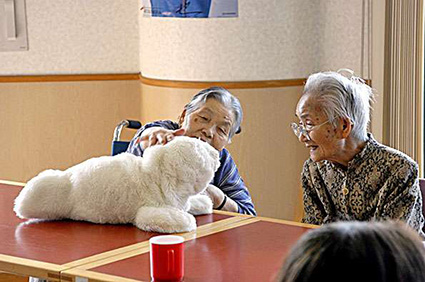 |
 |
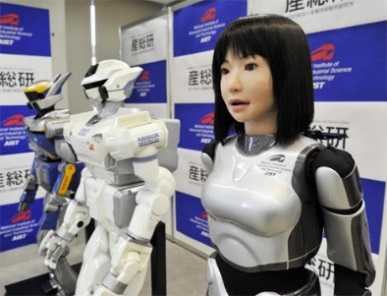 |